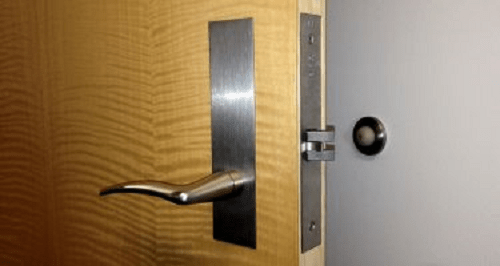
3.28.19 – Security Sales & Integration- For a low-voltage specialist such as an alarm dealer, what skillsets do they need in order to successfully compete in selling mechanical and electric locking …
Mark Berger is co-founder and CEO of New York-based Securitech, an independent manufacturer of high-security door locks. He joins the conversation to discuss trends in the educational market, among other topics relevant to the channel.
Securitech has products on the market that specifically address critical events like an active shooter. But can you speak to how locksets will be designed and applied in the future for a campus/classroom setting?
The K-12 world is a supervised environment, while college campuses are far more open. Over the past two decades we have seen great advantages in perimeter protection. Schools generally have a greeter at the front door during the morning rush, while colleges have moved to card access and secured entry to dormitories and many campus buildings.
Yet, all structures have classrooms or larger places of assembly which must be secured instantly during a critical event. These will always require a variety of locking modalities, but empowering anyone in a room to enact a code-complaint lockdown will be the common factor.
Given the preponderance of gun violence in this nation, can you put into perspective how market demand and the urgent need to improve security affect your work in this context?
Security is a reaction to a changing society. In many urban areas, intercoms were located within an entry vestibule and the electrically-released door was the inner door. In the 1980s, intercoms and the locked doors were moved to the street door. This eliminated the security risk of standing in a vestibule and feeling trapped.
It also prevented the homeless and others from hanging out in these warm or dry areas on cold or rainy days. We participated in massive programs with housing agencies in New York and other cities as they adapted their building entrances to changes in society.
Securitech has taken the position that our most valuable catalog cut is a blank sheet of paper. The interview process with the end user, where multiple parties in the decision process can clearly articulate their needs — often conflicting — for each particular opening, is critical.
We then review existing products in the marketplace, see if there is an opportunity for us to modify our existing technology or develop something radically new to serve the enduser.
One of my favorites is our multiple cylinder release lever trim. We have different end users who need keyed entry to a space in the event of a power failure, yet different departments have their own keying systems. We’ve gone up to four cylinders stacked in a row, all momentarily unlocking the same lever. I’m sure someday we’ll get the request for five.
Necessary Skillsets
For a low-voltage specialist such as an alarm dealer, what skillsets do they need in order to successfully compete in selling mechanical and electric locking solutions?
An alarm dealer should team with a knowledgeable door hardware installer or locksmith. Aside from the many code considerations which those involved with doors on a daily basis bring to the table, the different needs of openings and types of doors, as well as the wide variety of products are enough to make an alarm dealer’s head spin. Many low-voltage houses recognize this discipline and are hiring techs who are experienced door hardware technicians.
You are also president of DHI, an association that serves door security and safety professionals. What is your pitch to alarm dealers and security integrators … how might DHI assist to advance their businesses?
We have entered into a world of specialization on the construction site, as well as in retrofit applications. DHI members have adapted over the last few decades to go beyond providing packaged products to offer installation services, including integrating door hardware signaling, release and monitoring products. In the old days, a keying meeting was part of a project kick-off.
Nowadays, DHI members should be brought in at the inception, along with the security dealer, to make sure both ends of the wire are covered on the jobsite.
Market Disruption
Can you identify a couple big market disruptors taking place currently in the door hardware space that dealers and integrators may not have a handle on, and how those might affect their ability to compete in the space?
More and more door hardware products include electrification, signaling and IoT technologies. Getting this right on the job site requires early coordination with the integrator. The speed with which new technologies are being introduced and then obsoleted by manufacturers can wreak havoc on a construction project.
One of the other biggest changes has been the move towards pre-installed door hardware onto the door, prior to delivery to the job site. This can ease field wiring issues, but requires close coordination.
Having worked on projects as diverse as the back-of-the-house locking at the World Trade Center to classroom doors in the new Sandy Hook school, the biggest issue for me is the need to ensure life-safety compliance, while meeting emerging security needs due to societal changes. Automatic deadbolt locking, both single-point and multipoint, will grow in the marketplace to satisfy previously conflicting safety and security needs.
I have a photograph of a school door with two signs on it; one from 20 years ago asks visitors to please stop by the school office upon entering. The newer one instructs them to use the intercom and identify themselves prior to entering. Our first diversion from the open society we had create started at airports. Step by step it is encroaching into every area of our every day life. Let’s hope our technology advances to make this as seamless as possible.
